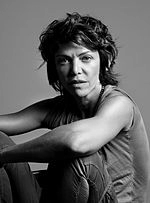How to Pronounce Miriam Cabessa
#50
Most Popular
Boost
Jun 02, 1966 Casablanca, Casablanca Settat, Morocco 57 years old
Israeli artist
GeminiMiriam Cabessa, Date of Birth, Place of Birth, Family, Facts, Age, Net Worth, Biography and More in FamedBorn.com

Israeli artist
Gemini